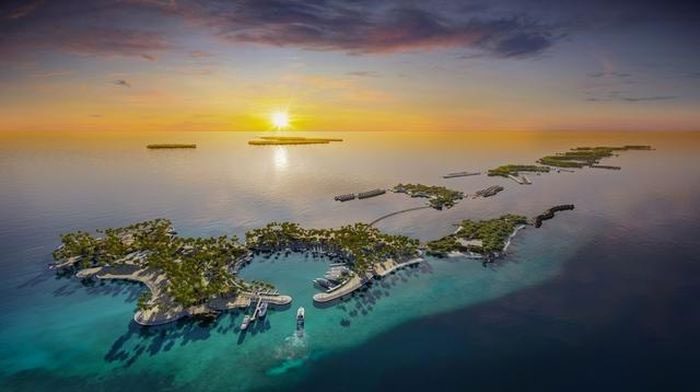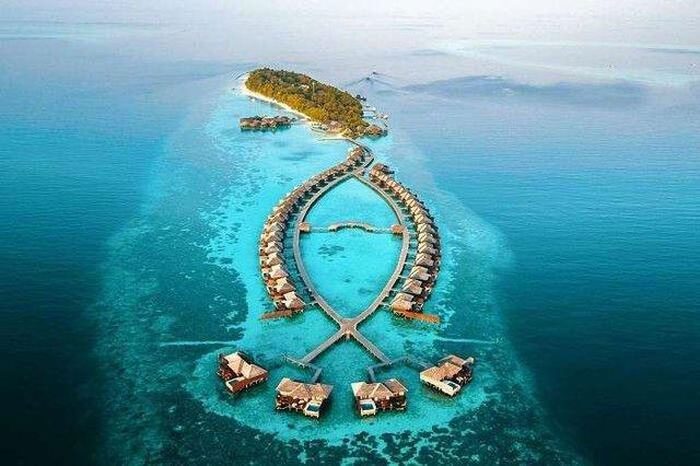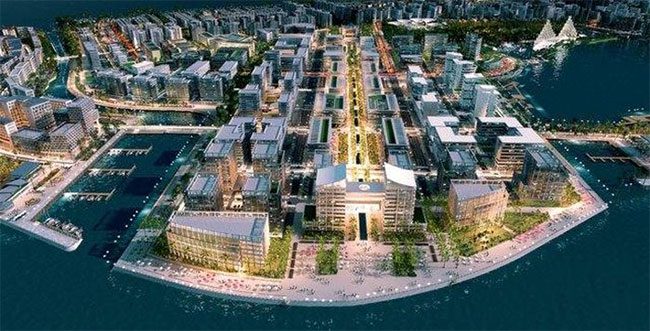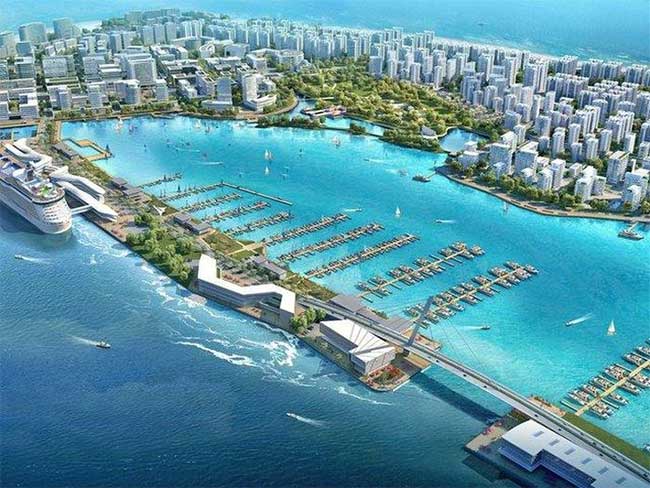The Maldives is an island nation located in the Indian Ocean, renowned for its stunning beaches and luxurious tourist destinations. However, the Maldives is facing severe impacts from climate change.
The world often knows the Maldives for two things: it is a luxurious coastal resort destination and also the first country on Earth that could disappear under rising sea levels if that indeed happens in the future. In recent years, the tourism sector in the Maldives has been thriving significantly. Yet, this paradise may not exist for much longer.
Why Will the Maldives Be Submerged?
As an archipelago consisting of islands and coral atolls in a low-lying area, many regions of the Maldives are threatened by rising sea levels. Numerous studies and predictions indicate that much of the country will become uninhabitable in the 21st century.

Some islands in the Maldives are threatened by rising sea levels.
A million years ago, when dinosaurs disappeared, the Indian tectonic plate drifted northward, creating a crack in the Earth’s crust, which formed volcanic peaks. Over time, these peaks eroded to create the coral islands of the Maldives.
The total land area of this country is only 298 km2 within 90,649 km2 of ocean, with very few islands larger than 1.2 km2. The land and sea interweave to form the identity of the Maldives, but this structure is highly dynamic. The islands themselves are ephemeral: sandy beaches perched on coral foundations, they grow and shrink, rise and fall depending on ocean currents and sand sedimentation.
Most islands, including the capital Malé, are about 160 cm above sea level. Climate scientists predict they will be flooded by the end of this century.
Climate change is seriously threatening the existence of the Maldives. According to the World Bank, with sea levels expected to rise by about 10 to 100 cm by 2100, the entire country could be submerged. By 2050, 80% of the country may become uninhabitable due to global warming. As early as 1988, the Maldives government declared that rising sea levels would completely cover the nation, consisting of 1,196 small islands in the Indian Ocean, within the next 30 years. This means that 30 years later, which is now, things are turning out better than predicted.
However, the future of the Maldives in the next 30 years remains uncertain. A 2007 report from the Intergovernmental Panel on Climate Change predicted that the upper limit for sea level rise would be 59 cm by 2100. This means nearly 200 inhabited islands in the Maldives would have to be abandoned as they become unsafe for living.

A travel paradise will indeed not exist for long.
In 2020, a three-year study at the University of Plymouth (UK) found that when tides move sediment to create higher elevations, uninhabited islands in the Maldives might be more adaptable to rising sea levels and keep some islands habitable.
How the Maldives is “Fighting” to Save Itself
Now, as the pace of climate change accelerates, this small nation is trying to “buy time” in the hope that world leaders will reduce carbon emissions before the Maldives inevitably faces collapse. The archipelago is betting its future – along with a significant amount of its national budget – on building a high artificial island that could house much of its population of around 555,000. Meanwhile, a Dutch design company plans to construct 5,000 floating houses on a swamp for habitation.
These may seem like extreme measures, but the Maldives truly has little time left. As President Ibrahim Mohamed Solih told world leaders at the UN climate conference in Scotland in the fall of 2021: “The difference between 1.5 degrees and 2 degrees Celsius is a death sentence for the Maldives.” And this is not a new cry for help. A decade ago, his predecessor – Mohammed Nasheed, held a cabinet meeting underwater while wearing diving gear and then proposed relocating the entire population to Australia for safety.
The artificial city is rapidly being constructed and is called Hulhumalé, meaning “Hope” in the local language. It stands nearly 2 meters above sea level. This artificial island is created from sand pumped from the seabed. Residents from across the Maldives are gradually being relocated to high-rise buildings to escape the rising sea levels. A second twin island is also being constructed similarly.


Hulhumalé is the city of hope for the Maldivians.
“Two-thirds of the population could live on these two main islands,” said Ismail Shan Rasheed, a planning strategist at the Hulhumalé Development Corporation.
In many ways, Hulhumalé resembles a city from games like SimCity. It is filled with parks and apartments, mosques and shops, ice rinks, and sidewalks, schools and roads, all built in a tidy seaside town connected to the capital Malé by a miles-long bridge in 2018.





















































